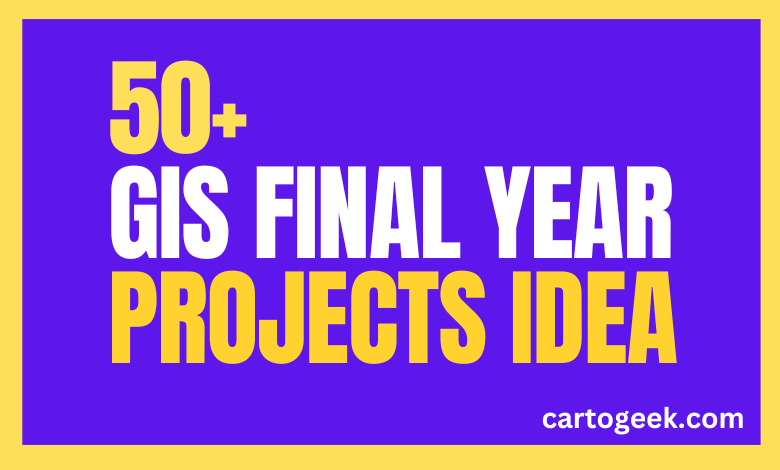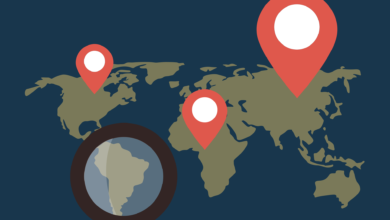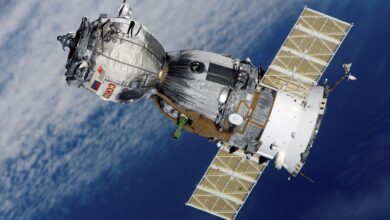Get Started on Your GIS Project with These 50+ Great Ideas
Looking for ideas to kickstart your next GIS project? Check out our list of over 50 GIS project ideas that cover a range of industries and applications, including urban planning, environmental monitoring, disaster management, transportation planning, and natural resource management. Get inspired and make an impact with your GIS skills!

Contents
Gis Final year Project Idea
Are you a final year GIS student looking for ideas for your capstone project? Choosing the right topic for your final year project is crucial, as it can set the tone for your career in GIS. Luckily, there are plenty of exciting project ideas that can showcase your skills and creativity in the field of GIS.
Geographic Information Systems or GIS is a rapidly growing field that involves the use of spatial data and advanced computing technologies to analyze, visualize, and manage complex geospatial information. GIS technology has numerous practical applications in various industries, including urban planning, resource management, environmental monitoring, and disaster management, among others.
If you are a final year student looking for an exciting GIS project idea, here are some suggestions that can help you get started:
- Urban Planning and Management One potential GIS project could focus on using spatial data and analysis tools to support urban planning and management efforts. You could develop a tool that allows city planners to collect, analyze and visualize data related to zoning, land use, transportation, and infrastructure. This project would be particularly relevant for urban planners looking to improve the sustainability and livability of cities.
- Environmental Monitoring Another potential GIS project could focus on using satellite imagery and other remote sensing technologies to monitor changes in the environment. For example, you could develop a tool that uses time-series satellite images to track the changes in vegetation cover over time. This project would be useful for environmental scientists and conservationists interested in studying the impacts of climate change and land use on ecosystems.
- Disaster Management GIS technology can also be used to support disaster management efforts by providing real-time situational awareness and helping with response and recovery efforts. You could develop a tool that integrates data from various sources, such as social media feeds, weather forecasts, and sensor networks, to provide emergency responders with up-to-date information about the location and severity of a disaster.
- Transportation Planning GIS technology can also be used to support transportation planning efforts by analyzing traffic patterns, identifying bottlenecks, and optimizing transportation networks. You could develop a tool that uses GPS data and other sources to track the movement of vehicles and pedestrians and identify areas where congestion is likely to occur. This project would be useful for transportation planners and engineers interested in improving the efficiency and safety of transportation systems.
- Natural Resource Management Finally, GIS technology can be used to support natural resource management efforts by analyzing data related to land use, biodiversity, and ecosystem services. You could develop a tool that uses satellite images and field surveys to map the distribution and abundance of different plant and animal species in a particular area. This project would be useful for conservationists and natural resource managers interested in protecting and restoring ecosystems.
some general ideas to inspire your final year GIS project
Here is the list of GIS Project
- Analysis of Urban Heat Islands (UHI) and their impact on public health.
- Using GIS to improve natural disaster response.
- Mapping vegetation cover and change detection.
- Developing a GIS-based decision support system for waste management.
- Assessment of land suitability for crop production.
- Spatial analysis of crime patterns and trends.
- Developing a GIS-based tool for wildfire risk assessment and management.
- Monitoring and mapping coastal erosion and sea-level rise.
- Assessing the effectiveness of green infrastructure in urban areas.
- Mapping and monitoring air pollution levels in urban areas.
- Developing a GIS-based system for real-time traffic monitoring and analysis.
- Analyzing the impact of land-use change on biodiversity.
- Mapping and modeling groundwater availability and quality.
- Developing a GIS-based tool for solar energy potential assessment.
- Mapping and analyzing the distribution of invasive species.
- Developing a GIS-based system for monitoring and managing forest resources.
- Analyzing the impact of climate change on wildlife habitat.
- Mapping and monitoring the spread of infectious diseases.
- Developing a GIS-based system for urban water management.
- Developing a GIS-based tool for landslide hazard assessment and management.
- Mapping and monitoring land cover changes in agricultural areas.
- Analyzing the impact of urbanization on freshwater resources.
- Developing a GIS-based tool for real-time weather monitoring and forecasting.
- Mapping and monitoring the spread of forest fires.
- Developing a GIS-based system for sustainable tourism planning and management.
- Analyzing the impact of urbanization on air quality.
- Mapping and analyzing the distribution of endangered species.
- Developing a GIS-based system for urban tree inventory and management.
- Analyzing the impact of land-use change on soil erosion.
- Mapping and monitoring land-use changes in protected areas.
- Developing a GIS-based tool for solar radiation mapping.
- Mapping and analyzing the distribution of wetlands.
- Developing a GIS-based system for coastal zone management.
- Analyzing the impact of climate change on water resources.
- Mapping and monitoring land cover changes in urban areas.
- Developing a GIS-based system for wildlife habitat mapping and management.
- Analyzing the impact of land-use change on water quality.
- Mapping and monitoring land-use changes in mining areas.
- Developing a GIS-based tool for flood risk assessment and management.
- Mapping and analyzing the distribution of wildlife corridors.
- Developing a GIS-based system for urban noise mapping and management.
- Analyzing the impact of land-use change on urban heat islands.
- Mapping and monitoring land-use changes in transportation corridors.
- Developing a GIS-based tool for solar energy potential mapping.
- Mapping and analyzing the distribution of fish habitats.
- Developing a GIS-based system for urban agriculture planning and management.
- Analyzing the impact of land-use change on biodiversity hotspots.
- Mapping and monitoring land-use changes in coastal areas.
- Developing a GIS-based tool for slope stability analysis.
- Mapping and analyzing the distribution of bird habitats.
- Improving Public Health with GIS-based Analysis of Urban Heat Islands
- Effective Natural Disaster Response Planning and Management using GIS
- Detecting Vegetation Cover Changes with GIS for Sustainable Resource Management
- Optimizing Waste Management with a GIS-based Decision Support System
- Land Suitability Analysis for Crop Production using GIS: A Case Study
- Crime Analysis and Mapping for Urban Planning with GIS
- Developing a GIS-based Wildfire Risk Assessment and Management System
- Mapping Coastal Erosion and Sea-level Rise for Effective Adaptation Strategies
- Assessing Green Infrastructure Effectiveness using GIS for Urban Planning
- Mapping and Monitoring Air Pollution Levels in Urban Areas with GIS
- Real-time Traffic Monitoring and Analysis with GIS for Improved Urban Mobility
- Impact Assessment of Land-use Change on Biodiversity with GIS
- Mapping and Modeling Groundwater Availability and Quality with GIS
- GIS-based Solar Energy Potential Assessment for Sustainable Energy Planning
- Mapping and Analyzing the Distribution of Invasive Species with GIS
Here are some Other ideas to get you started:
- Urban Heat Islands: Analyze the impact of urbanization on heat islands and explore the use of GIS to mitigate the effects of heat on urban residents.
- Disaster Management: Develop a GIS-based system to assist emergency responders in disaster management.
- Vegetation Analysis: Use GIS to analyze and monitor vegetation cover changes, and assess the impact of human activities on biodiversity.
- Waste Management: Develop a GIS-based decision support system for waste management optimization.
- Land Suitability Analysis: Use GIS to assess land suitability for crop production and explore the potential of precision agriculture.
- Crime Analysis: Develop a GIS-based system to analyze crime patterns and trends for urban planning.
- Wildfire Risk Assessment: Develop a GIS-based wildfire risk assessment and management system.
- Coastal Erosion: Map and monitor coastal erosion and sea-level rise using GIS.
- Green Infrastructure: Assess the effectiveness of green infrastructure using GIS for sustainable urban planning.
- Air Pollution: Map and monitor air pollution levels in urban areas using GIS for public health management.
- Real-Time Traffic Monitoring: Develop a GIS-based real-time traffic monitoring and analysis system for urban mobility improvement.
- Biodiversity Impact Assessment: Use GIS to assess the impact of land-use change on biodiversity and explore ways to mitigate negative impacts.
- Groundwater Availability and Quality: Map and model groundwater availability and quality using GIS for sustainable water resource management.
These are just a few ideas to inspire your GIS final year project. By choosing a project that aligns with your interests and strengths, you can create a project that not only meets the requirements for your degree, but also demonstrates your potential as a GIS professional.
In conclusion, a final year GIS project can be a great opportunity to showcase your skills and creativity. With the right topic, you can create a project that not only meets the requirements for your degree, but also has the potential to make a positive impact in the field of GIS. So, get inspired and start brainstorming your final year GIS project idea today!
Read More






